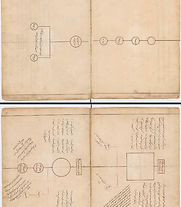Our Historical Books
History
Heading 6
View All By
Years
Languages
Subclass
Era
Our General Books
General
Heading 6
View All By
Years
Languages
Subclass
Era
Our Geography Books
Geography
Heading 6
View All By
Years
Languages
Subclass
Era
Our Religious Books
Religion
Heading 6
View All By
Years
Languages
Subclass
Era
Our Science Books
Science And
Technology
Heading 6
View All By
Years
Languages
Subclass
Era
Our Law Books
Law
Heading 6
View All By
Years
Languages
Subclass
Era
Our Education Books
Education
Heading 6
View All By
Years
Languages
Subclass
Era
Our Music Books
Music
Heading 6
View All By
Years
Languages
Subclass
Era
Our Arts Books
Arts
Heading 6
View All By
Years
Languages
Subclass
Era
Our Literature Books
Literature
Heading 6
View All By
Years
Languages
Subclass
Era
Our Medicine Books
Medicine
Heading 6
View All By
Years
Languages
Subclass
Era
Our Agricultural Books
Agriculture
Heading 6
Our Military
Military
Heading 6
View All By
Years
Languages
Subclass
Era



























![TITLE: Badāʼiʻ al-funūn, Court of Accounting
Publication date: 1664
Publisher: [India?]
Contributor: Columbia University Libraries
Language: Persian
Title (alternate script): بدائع الفنون](https://static.wixstatic.com/media/95504a_2af8e0313b8741a7af29f8f93c12b524~mv2.jpg/v1/fill/w_121,h_207,al_c,q_80,usm_0.66_1.00_0.01,enc_avif,quality_auto/95504a_2af8e0313b8741a7af29f8f93c12b524~mv2.jpg)

![Title
The vegetation of the districts of Hughli-Howrah and the 24-Pergunnahs.
Contributor Names
Prain, David, Sir, 1857-1944. [from old catalog]
Created / Published
Calcutta, Office of the superintendent of government printing, India, 1905.
Subject Headings
- Botany--India. [from old catalog]](https://static.wixstatic.com/media/95504a_e54d8bfc5ca04dffb9c18912215ed457~mv2.jpg/v1/fill/w_130,h_207,al_c,q_80,usm_0.66_1.00_0.01,enc_avif,quality_auto/95504a_e54d8bfc5ca04dffb9c18912215ed457~mv2.jpg)
![The mission of Sir Thomas Roe to the court of Jahangir was not only a remarkable episode in the life of a remarkable man, but an event of high importance in the history both of England and of India ; for the footing which was then obtained, largely through his energy and wisdom, by the despised traders from the West, proved to be but the first step in a march of conquest which has only of late years reached its limits, and the scarlet liveries which escorted the ambassador through Rajputana were prophetic of a time when a descendant of King James should rule over an Indian empire vaster and infinitely more prosperous than ever owned the sway of a Mogul. Considerations of this nature would not, it is true, entitle an account of the embassy to a place among the publications of the Hakluyt Society. But it happens that the ambassador kept, for the information of his employers, a. minute and careful record of the events of his mission, besides writing from time to time full accounts of his proceedings to his many friends in England; and,
being in a land so little known to his fellow-countrymen, his diary and letters are naturally full not only of what he did but also of what he saw. His position afforded him excellent opportunities for observation, while a natural gift for literary expression imparted a vividness to his descriptions which is often lacking in the writings of other travelers of the period. The result is a picture of the India of the early seventeenth century which is of ex-
ceptional value and interest; and‘ on this ground the Council of the Society have judged his journal suitable for inclusion in their series. As explained at greater length in the Introduction, the present edition is based chiefly upon Roe’s own copy of his
journal (Brit. Mus. Add]. MS. 61 I 5), which has been printed for the first time at full length. Unfortunately this record is not complete.
Mughal Library](https://static.wixstatic.com/media/95504a_83073d0cc01a414286c2012d49333c45~mv2.png/v1/fill/w_152,h_207,al_c,q_85,usm_0.66_1.00_0.01,enc_avif,quality_auto/95504a_83073d0cc01a414286c2012d49333c45~mv2.png)


![The book Jami Al Ulum Wal Hikam was written by Muhammad Fadel in the year of 1978.
Imam Ahmad [may Allah he pleased with him} said, “lslam is established on three basic hadiths: “The reward of deeds depends upon their intentions,“ reported by ‘Limar; “If anyone innoyates things in this affair of ours, the religion of Islam] for whieh there is no Yalid (reason), his innoYalions are to be rejected,“ reported by ‘A-ishah,-, and “Both legal and illegal things are obvious" reported by An-Nu man Bashir."](https://static.wixstatic.com/media/95504a_c4f88620ac554792b39ef06e111e3ad2~mv2.jpg/v1/fill/w_145,h_207,al_c,q_80,usm_0.66_1.00_0.01,enc_avif,quality_auto/95504a_c4f88620ac554792b39ef06e111e3ad2~mv2.jpg)



























